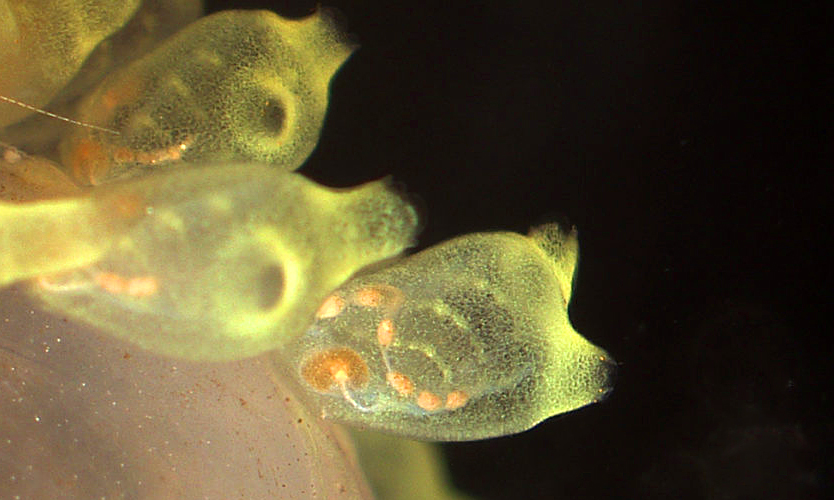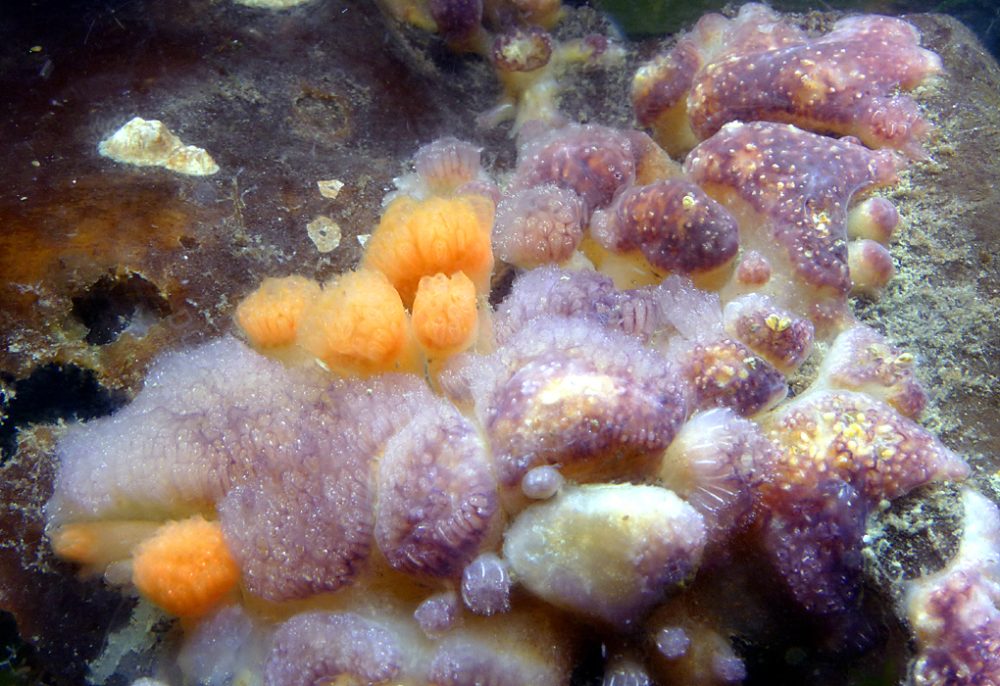
by David Young | Jul 20, 2024 | Tunicates
Yellow Social Tunicate “Sea Grapes” Authors: Anouk and Calen Illustrations: by Sasha Video by W. De Simone, photos by D. Young Scientific name: Perophora annectens Size: Up to 6mm tall and 2-3 mm wide. Habitat: Intertidal zone, 30m (100 ft). Found in southern Alaska...

by David Young | Jul 20, 2024 | Tunicates
Transparent Tunicate Scientific Name: Corella inflata This is one of the most transparent tunicates found on the Pacific Coast from Alaska to Southern California. Water enters the top of the tunicate at the incurrent siphon where it is filtered by the gill slits of...

by David Young | Jul 20, 2024 | Tunicates
Gray Encrusting Compound Tunicate Scientific Name: Diplosoma listerianum This is a common encrusting compound tunicate that is commonly found along docks in the Pacific Northwest. Similar to other tunicates it grows on rocks, barnacles, bivalves, as well as the...

by David Young | Jul 20, 2024 | Tunicates
The Mushroom Compound Tunicate Author: Pauline Ewoldt Scientific Name: Distaplia occidentalis The Mushroom Compound Tunicate or also known as Distaplia occidentalis is distributed in the Northeast Pacific from Alaska to southern California. The species is...




